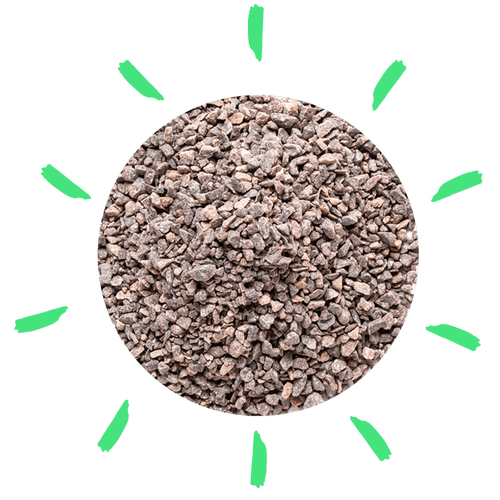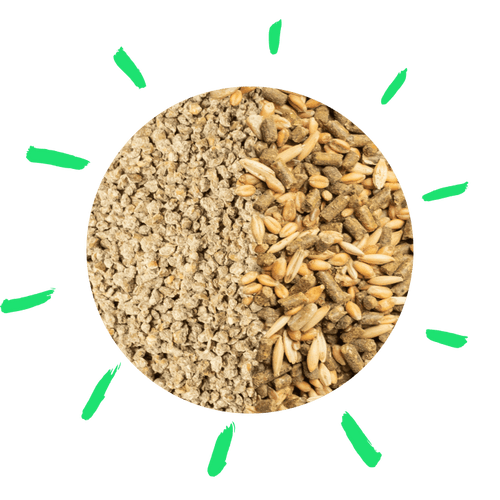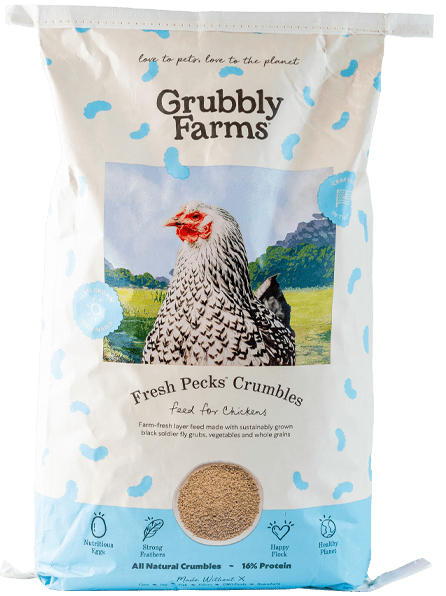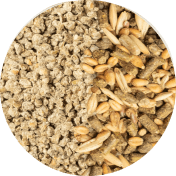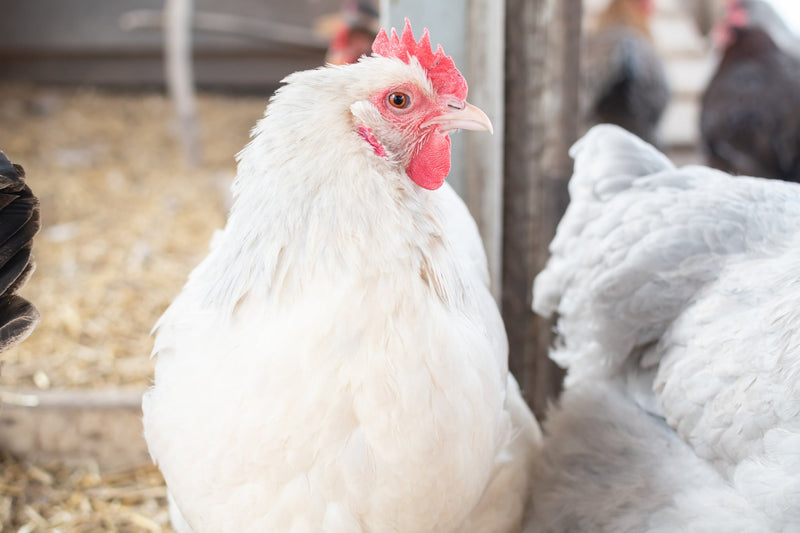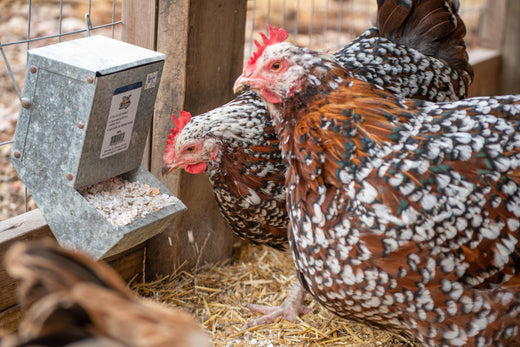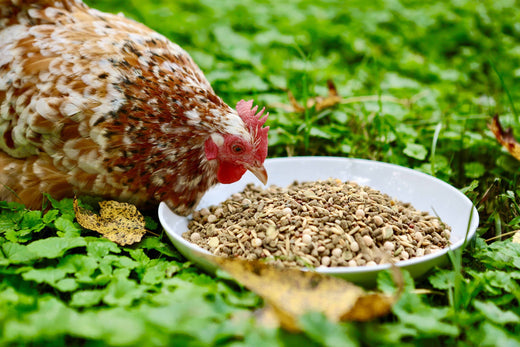You’ve possibly heard the phrases, “What’s in your craw” or “stuck in my craw.” However, many people don’t realize these sayings arise from a potential problem that’s unique to the anatomy of birds–including our beloved chickens. A chicken’s craw or “crop” is vital to their health, and sour crop is a potentially life-threatening health condition that can get very serious very quickly.
If you’re wondering if one of your fluffy friends is suffering from sour crop and how you can help, this article is for you! We’ll explain what a chicken’s crop or craw is, what sour crop is, and how to treat and prevent sour crop in your flock.
What is a Chicken’s Crop?

Before we dive into the details of what sour crop is, why it happens, and how you can prevent or treat sour crop, we need to do a quick anatomy lesson. Why? Sour crop is an ailment of the crop.
The crop is a specialized anatomical feature and a bird’s method of storing food without sending it directly to the digestive system. On a chicken, the crop is a sac-shaped organ located just above the breast but below the neckline.
The crop is attached to the esophagus. So, when a chicken consumes food, the food can immediately travel to the crop for storage. While the food is being stored in the crop prior to digestion, the enzymes in the crop start to break down the food. This aids with the digestion process. The food is then slowly released from the crop to continue being fully digested by the chicken’s gizzard, stomach, and intestines.
What is Sour Crop?

Sour crop is a fungal infection of the crop. It occurs when the food in the crop begins to ferment. This is the result of a pH imbalance and how this imbalance affects the natural bacteria in a chicken’s crop.
Sour crop is usually an individual case ailment. This means that it often only affects a single chicken. However, if a common trigger is consumed by the whole flock, you may have several cases of sour crop on your hands. For example, if your whole flock forages on long grasses or consumes moldy feed, they are all prone to getting sour crop
pH, Bacteria, & Fermentation in the Chicken’s Crop
In order to understand what causes the fermentation, you must know about pH. The pH levels of the crop determine how acidic or alkaline the crop is. Normal crop pH levels are slightly acidic, ranging around the 5.5 pH level. The slightly acidic pH level encourages the productivity of good bacteria in the crop which help break down the food and send it on its way to the gizzard.
When the crop’s pH levels get altered, the good bacteria are thrown off, allowing bad bacteria and fungus to start to proliferate. Bad bacteria and fungus are what cause the crop contents to start fermenting and not get sent on to the gizzard for further digestion.
What Causes Sour Crop in Chickens?
For those of you who want the full science behind sour crop, this section is for you. As a quick review, an altered crop pH level is what allows bad bacteria, or fungus, to proliferate.
One such problematic fungus is Candida albicans. Candida albicans is a fungus that appears as white plaque in the crop and even in a chicken’s throat and mouth. The white plaque created by the fungus inhibits the crop from sending stored food onto the gizzard for digestion. It also causes the crop walls to thicken, decreasing the overall size of the crop and leading to crop impaction.
Crop impaction means that food can’t be moved out of the crop, allowing the fermentation process to begin (learn more about crop impaction). The crop remains full and the stored food starts to ferment. The fermentation process is what creates that classic ‘sour’-smelling breath that gives sour crop its name.
A Quick Recap of Chicken Sour Crop:
Altered crop pH → the increase in bad bacteria and fungus, specifically candida fungus → crop blockage → fermentation of stored food → sour crop & a chicken that doesn’t feel well and is physically unwell
Common Triggers of Chicken Crop Problems
So, what causes a change in normal crop pH levels? There are several triggers that can lead to crop issues in backyard chickens. Many of these triggers not only lead to sour crop, but can also lead to crop impaction. Keep in mind that sour crop and impacted crop can be interrelated, with one condition leading to the other.
Here are some common causes of crop problems in backyard chickens:
1. Long grass
Long grass usually causes impacted crop, which can then lead to fermentation and sour crop. Long grass can get balled up in the crop and be hard to break down because it is so fibrous, which then causes a crop blockage. Consuming too much long grass can be a problem when chickens start eating grass in the spring or for small bantam breeds.
2. Coop litter
If a chicken consumes too much of the litter or bedding in the coop, it can lead to crop problems. Certain coop litters, like wood shavings and straw, are fibrous and hard to digest, which can lead to blockage and fermentation.
3. Worms
Internal worms interfere with proper crop function and can lead to malnutrition. Certain types of worms are more problematic for the crop than others, with capillary worms being the main species that affects the crop.
4. Non-Natural Antibiotics
Synthetic antibiotic medications alter the pH levels in a chicken’s crop. The antibiotics can kill both good and bad bacteria in the crop, making room for bag fungus (like candida albicans) to thrive.
5. Foreign Objects
If a chicken accidentally consumes string, twine, or other sharp/hard objects that can’t be digested, those foreign objects can cause crop impaction and injuries to the crop. Impaction and injury inhibit proper crop functioning.
6. Moldy Feed/Foods
Mold is a fungus that can lead to fermentation of the crop’s contents. It also upsets the crop’s pH levels, leading to fungal growth and sour crop.
How to Diagnose Sour Crop

The easiest way to diagnose sour crop is to see if the crop is emptying properly. Chickens generally stock up on food throughout the day, then the food slowly gets released from the crop and digested throughout the night.
If you’re ever unsure of your chicken’s health, always contact your local vet for diagnosis.
The Crop Fullness Test
If you suspect a sour crop issue, do a crop-fullness test. You can do this test for an individual chicken by quarantining it or for your whole flock.
Start by taking away the food and water source in the evening. In the morning, feel the crop to see if it feels empty or full. An empty crop will feel small, flat, and hard. A full crop will be easy to feel and will be squishy and soft. A fully impacted crop will feel large and hard.
A full crop or a hard impacted crop in the morning means your chicken has a crop problem. When checking for sour crop, a full squishy crop accompanied by sour-smelling breath is a sure sign of sour crop. You may also hear gurgling noises coming from the hen’s crop, which is from the fermentation process.
Other Symptoms & Signs of Sour Crop
Sour crop is not a fun condition, and you will usually see other signs that mean the hen is ailing, such as:
- Lethargy: not wanting to move, standing in a hunched position, ruffled feathers
- Lack of interest in food and water
- Weight loss
- Diarrhea
- Decrease in egg production
How to Treat Sour Crop in Chickens

Once you have diagnosed sour crop, you will want to treat the condition as soon as possible. When the crop is not functioning properly, it means the hen is not getting the nutrition she needs from her food. This leads to malnutrition and eventually death.
Step 1: Quarantine the Hen
First, you will need to quarantine the affected hen. Create a comfortable and safe infirmary pen for her away from the rest of the flock.
Step 2: Restrict Food & Water
Don’t provide her with food or water for the first 24 hours of her treatment. The crop is already full and the contents are fermenting, so adding more to the crop will not help the condition.
Step 3: Massage the Hen’s Crop
Massage the hen’s crop several times, massaging from the top to the bottom (throat to breast). The massaging should hopefully help break up any blockage which is causing the crop contents to remain in the crop and ferment. You should try and massage the crop at least 3 to 4 times a day.
Step 4: Monitor Progress & Contact a Vet If Needed
Try to get the condition cured within 24 hours of diagnosing the sour crop. If none of the treatments are working, then you may need to consult a veterinarian. Hopefully massaging the crop should help it empty, but we will go over some more emergency treatment methods in a minute.
Step 5: Sour Crop Recovery
Once the crop feels like it has emptied, meaning it feels smaller and less squishy, give the hen some fresh drinking water. However, it’s important to wait 12 more hours before providing food.
After the fasting period, provide small amounts of easy-to-digest foods. Scrambled eggs are a good food to start a hen on who is recovering from sour crop. Feed her frugally for the first 24-48 hours.
Make sure she has plenty of fresh drinking water to help the crop recover from the blockage, flush out any fungus, and restore good crop bacteria. Keep the hen quarantined until you are sure the crop is back to functioning normally and you can feel that it is emptying properly every night.
Sour Crop vs. Impacted Crop
Keep in mind that sour crop can be caused by impacted crop, a serious condition that may need the expertise of a veterinarian to be cured. Sour crop that is not cured quickly can lead to impacted crop as well, so try to address sour crop as efficiently and effectively as possible.
Sour Crop Emergency Treatments
If massaging the crop regularly for 24 hours did not help the condition or if you suspect your chicken has suffered from sour crop for an extended period of time, then you may want to try some emergency measures for treating sour crop.
It is best to consult a vet before performing any emergency treatments, however, these are some home remedies that may help you cure your ailing hen.
Stimulate Vomiting
The next step after massaging the crop would be to stimulate vomiting. Stimulating a hen to vomit can help relieve some of the pressure in the crop and remove some of the fermented contents.
Chickens can’t naturally vomit, so this procedure should be done carefully to avoid any of the vomited contents from being inhaled into the chicken’s lungs.
To stimulate vomiting:
- Hold the hen and gently tilt her head towards the ground.
- Massage the crop more vigorously from bottom to top (breast to neck) to encourage the crop contents to travel back up the esophagus and be vomited out. Only make the hen hold this position for 15-20 seconds.
- Then allow her to recover and breathe normally.
You can stimulate vomiting in 3-4 intervals no more than 4 times a day. If no fluid comes out when you stimulate vomiting, then the hen has nothing else in her crop and you just need to work on breaking up any blockage that remains in the crop.
Home Supplements for Crop Blockages
In addition to triggering vomiting, you can also use some home supplements that are thought to help flush out the crop or break up blockages in the crop. These home supplements may be helpful for treating sour crop or administering to a hen who is recovering from sour crop.
Here are some home supplements that may help with sour crop:
- Epsom salts (detoxifies the crop)- dissolve 1 tsp. into 1 c. of water, administer 2-3 times a day for 2-3 days
- Tomato juice (restores normal crop pH levels)- administer a 1-2 ml serving 2-3 times a day for no more than 24 hours
- Blackstrap Molasses (acts as a crop flush)- dissolve 1 pint of blackstrap molasses per 5 gallons of water, provide the molasses water as the main source of water for no longer than 8 hours, WARNING: will cause diarrhea as a natural reaction to the flushing properties of molasses
- Copper sulfate (detoxifies fungus from the crop)- add ½ tsp. per gallon of water, provided as sole water source every other day for 5 days, don’t use in metal water containers since copper will react with the metal, WARNING: can be toxic in higher concentrations
Remember, the safest way to treat severe cases of sour crop is to bring your chicken to a veterinarian, preferably one who has some experience with birds or chickens.
How to Prevent Sour Crop

An ounce of prevention is worth a pound of cure, and sour crop is no exception! There are several practical and proactive ways to prevent sour crop from being an issue in your flock.
#1 Prevent overconsumption of fibrous, stringy foods.
Avoid feeding your flock handfuls of long, fibrous grass. You can do so by keeping spring foraging to a minimum in areas of tall grass.
If you are using straw as a coop litter, make sure you get good quality straw. Quality straw will have leftover grains mixed into the straw bale to provide your chickens something to forage for, discouraging them from consuming the actual straw shafts.
Pine boughs are also a popular boredom buster during the winter, just use them in moderation.
A healthy diet is always the most proactive measure you can take to ensure your flock’s long-term health and happiness.
#2. Provide supplemental grit.
Providing supplemental grit is a good idea if your flock is going to be around fibrous litter or foraging on high fiber foods. Put some layer grit in a free-choice feeder that your chickens can eat as they wish.
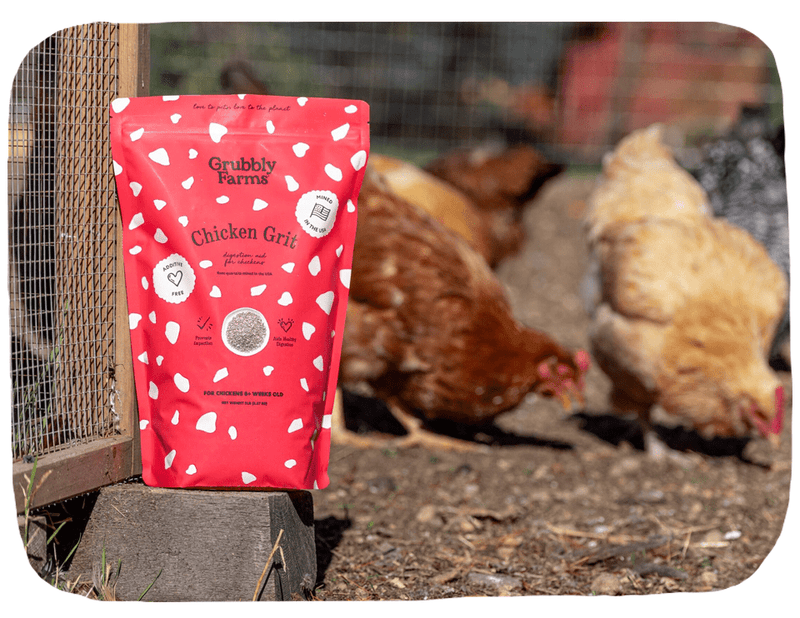
Chicken Grit
All Natural Grit
Pure rose quartzite, mined in the USA and free from harmful chemical additives.
Shop NowKeep in mind, free-range flocks or flocks that have access to dirt or sand will pick up grit naturally and more than likely won’t utilize supplemental grit.
#3. Prevent litter consumption.
Chickens aren’t usually inclined to eat the litter in the chicken coop. However, boredom can lead to litter eating. Other times, chickens accidentally consume litter if it gets mixed into their feed or snacks. Provide entertainment and stimulation to prevent boredom. Use hanging feeders to prevent litter from getting into the feed and try to keep any treats you give your flock in treat bowls or hanging treat dispensers.
#4. Prevent worms.
Since crop worms can lead to a crop impaction and improper crop function, you will want to stay on top of worm prevention for your flock. Keeping a clean coop and enclosure is one way to prevent internal parasites. You can also consider giving your flock natural worm prevention foods, like raw pumpkin seeds and garlic, on a regular basis.
#5. Avoid foreign objects.
Keep the chicken coop and enclosure a safe zone for your flock. Don't use string for making garland or other entertainment treats since string can easily break and be accidentally consumed. Avoid leaving foreign objects near the coop and enclosure, such as small screws, shiny metal objects, or any other un-edible object a chicken may accidentally eat.
#6. Use natural probiotics.
Probiotics help the crop maintain a proper pH level for encouraging good bacteria activity. If the crop is constantly maintained at the normal pH level and good bacteria are always being introduced in the form of probiotics, it makes it harder for bad bacteria and fungus to cause problems. Fermenting your flock’s food is a great way to give them some natural probiotics!
Prevent & Treat Sour Crop
Sour crop can be fatal, so always be proactive and begin treatment ASAP. Preventing and treating sour crop is a must-have skill for backyard chicken keepers.
Give your flock a healthy diet and practice good flock management to keep your chickens healthy, happy, and enjoying their best lives possible!







